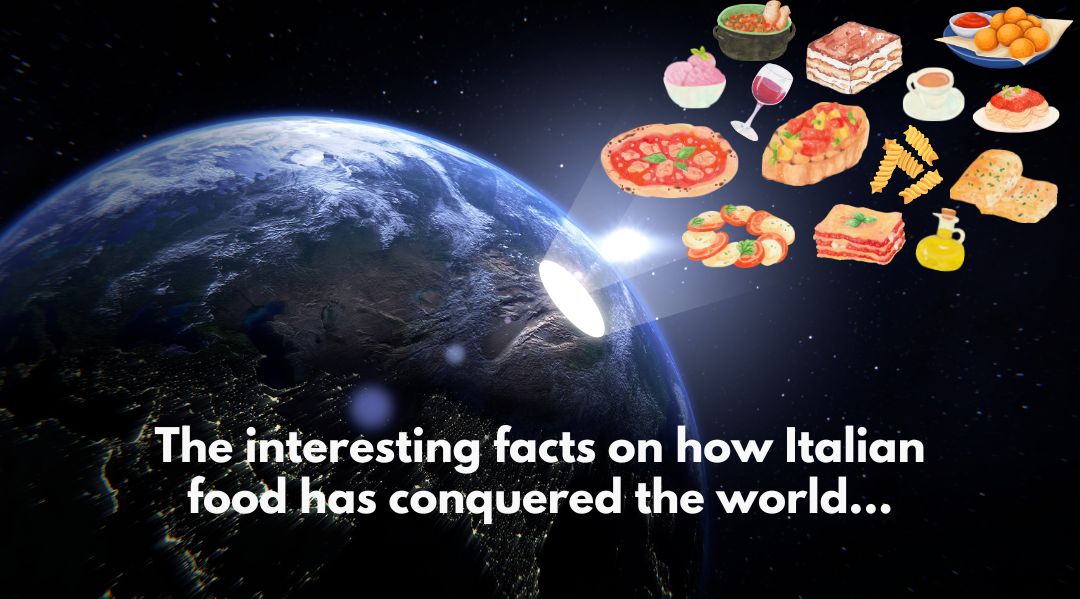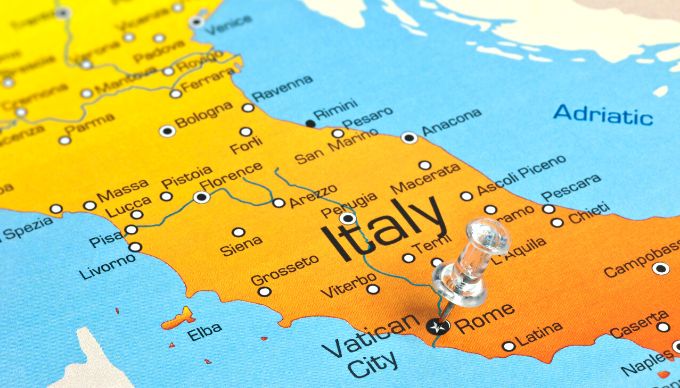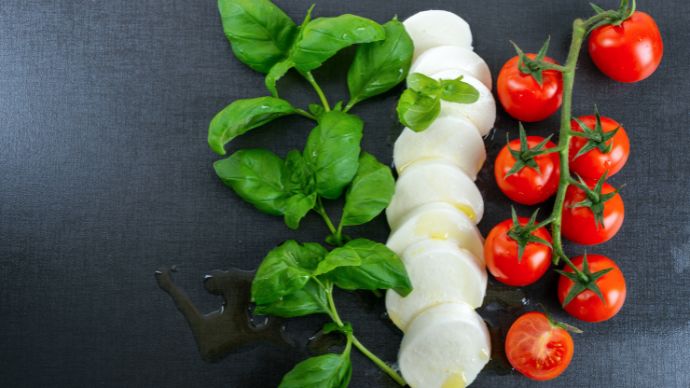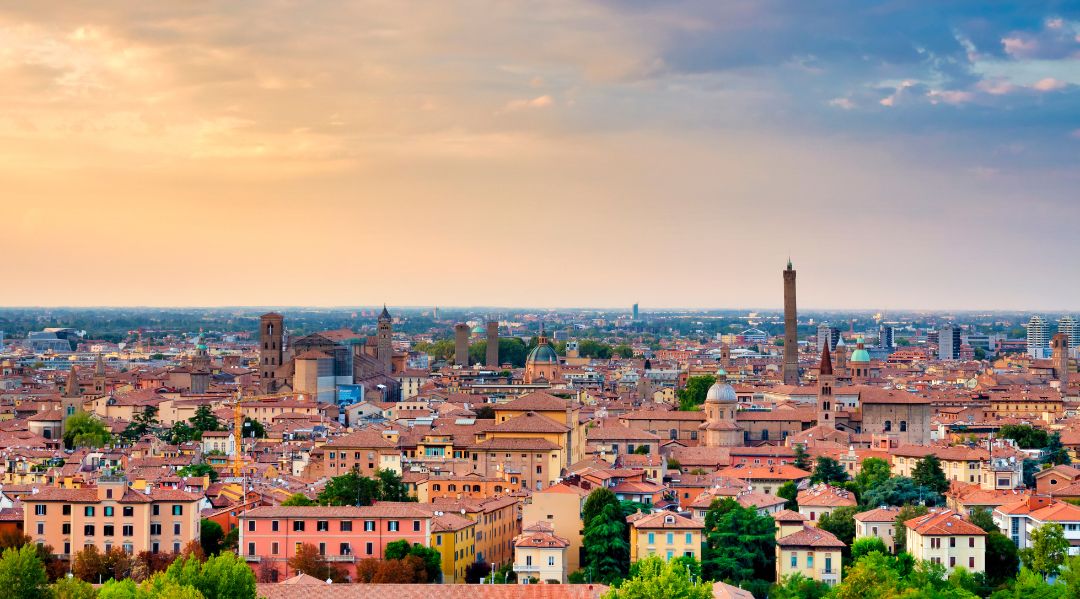
Italians have long been travellers; the Romans conquered the world, Venetian merchants search of goods and fortune, Marco Polo and Columbus on the hunt for new lands, and mass emigres in search of wealth.
And wherever Italians travel, their food goes with them!
History of Italian food
There is evidence that the Romans brought a variety of new foods to Britain, livening up their BC diet with garlic, onions, shallots, leeks, cabbages, peas, celery, turnips, radishes and asparagus, as well as rosemary, thyme, bay, basil and mint; as well as a fair few gallons of red wine. These are popular foods that are used almost daily by us today, so we have to thank the Romans for that one!
We now think of Romans tucking into feasts and wine with Latin brio – it was already part of their identity. In Britain, however, we went on to use these new ingredients in our own traditional ways, adding them to dull stews and broths. Not as exciting as you thought, right?
What we now think of as Italian staples – pasta, pizza, risotto, ice cream – didn’t even become popular in Italy until much later. Some say Marco Polo brought pasta back from China, but this is disputed. You can find out about Italian pasta’s history by reading one of our previous blog posts! You’ll find out that pasta had been growing in popularity in Italy from the early 13th century onwards.
Since the fall of the Roman Empire, when Italy became a collection of autonomous regions, those regions have partly defined themselves with food. Fierce pride about each regional specialty has led to the production and promotion of some wonderful dishes, many of which have found their way around the world. Ever since the Italian Unification in 1861, these regions retained their identities with culinary specialities.

Emigration of Italian Food
The modern global love of Italian food began with the mass emigration to the United States in the late 19th and early 20th century. Between 1876 and 1930, 5 million immigrants arrived in America, four-fifths of whom were economic migrants from the South.
American chronicler of Italian food and its history, John Mariani, says, “Neapolitan immigrants did bring their favourite street food to America – the pizza, which they ate with the crust folded over, as a kind of sandwich or snack.”
Soon, pizza wasn’t just the ex-Neapolitans’ snack of choice as pizzerias sprang up across America’s Eastern seaboard. By the 1950’s they were everywhere and the popularity of eat-in and take-out pizza had begun to soar. This inexpensive, hot, satisfying pizza was on its way to conquering the world. According to a study from Matt Brannon ‘In 2022 there are more than 78,000 pizzerias in America’. The Italians definitely sparked many Americans’ interest with their pizza snack, we would be lying if we said we didn’t enjoy pizza too…
Italian culture and climate has always favoured simple ingredients grown locally or preserved locally. Think dried hams, hard sheep and goat cheeses, sun-dried tomatoes – cooked simply to bring out the natural flavours.
Pizza exemplifies this – bread, tomatoes, cheese, maybe a leaf of basil. The classic Margarita pizza combination was dreamt up by Raffaele Esposito, where his restaurant Pizzeria Brandi is still in Naples, when the new Italian queen visited the city in 1889.
The pizza maker named a pizza after her, pizza alla Margherita, using the colours of the new Italian flag: red tomatoes, white mozzarella, and green basil. If I must say so myself, this is a very creative idea! It was also a great marketing tool for the humble Italian pizza that was forever growing worldwide.

Italian food becoming a hit in the US
The Italians also brought to America a long sandwich of Italian bread filled with mozzarella, provolone cheese, ham, lettuce, peppers, and sometimes with meatballs or breaded chicken. In the 1930s, a variety made with slices of beef and its juices topped with sweet peppers gained popularity, and in Connecticut became known as a submarine – or a sub. Do you see where this is going…
A local son of an Italian immigrant, named Fred DeLuca set up a ‘sub shop’ to raise money for college. This gradually evolved into the well known Subway sandwich shop we know today, with 16 units by 1974, growing to more than thirty thousands in over 90 countries today. The shop was originally called Pete’s Submarines however was changed to Pete’s Subway as the original name sounded too similar to ‘Pizza Marine’. Peter Buck was a family friend that donated DeLuca $1,000 to start up his business. This is a great example of how Italian food has conquered the world.
To read more about DeLuca’s Subway journey, click here.

Emigration of Italian Ingredients
Many of us still remember the Seventies, when basic Italian ingredients weren’t readily available outside Italy. It wasn’t until the late Eighties and the Mediterranean Food revolution that olive oil, pasta, even tinned tomatoes began to be widely imported to the UK and elsewhere.
Britain said arrivederci to tasteless pink tomatoes, and buon giorno to new vibrant Mediterranean sun-kissed ingredients!
Around this time, Brits started to go out to eat Italian food – partly buying into a romantic idea of La Dolce Vita, sunshine and eating alfresco, Italian style. We found these trattorias relatively inexpensive, pleasingly egalitarian and relaxed; a large bowl of pasta or a dough-licious pizza and a decent bottle of Chianti snug in its straw casing cost little more than eating in.
Until then, most wine in the UK was expensive and French. We liked it, and kept coming back. It wasn’t too long before chain stores, such as Pizza Express, began to pop up alongside those independent Italian trattorias.
Those quick off the mark began importing the essential items needed in the growing crop of Italian restaurants. These include: extra virgin olive oil, balsamic vinegar, funghi porcini, white truffles and true prosciutto, which were rarely seen outside Italy. And as these items arrived, the supermarkets picked up on the trend and started to sell spaghetti, olive oil, Parmesan cheese and more – not to mention decent ground coffee. It was then that we began to try out these things at home, and discovered that spaghetti alla Bolognese wasn’t too tricky to make ourselves. So, where Italian immigrants led, food importers followed.
Other countries and cultures have of course had huge culinary influence worldwide. Indian and Chinese foods, and more recently Thai, are immensely popular and began in a similar way. But Italian food is more popular, when you consider the size of the country and its population, compared to other countries. So how has Italian food conquered the world?
Firstly, the reasons start with that large influx of Italians to America. Italians are great marketers of their own food – those lovely cheerful restaurants, the idea of the dolce vita and huge confidence in their own cuisine. Therefore, Americans adored it.
But secondly, the key Italian ingredients are easy to import. Dried pasta couldn’t be easier to transport – it’s dry and doesn’t go off. The same goes for tinned tomatoes.

How has Italian food conquered the world?
As a final thought, it’s worth remembering that we have only looked at the general perception of Italian food that has spread so wide and successfully across the globe. Therefore, to fully understand Italian cuisine, we suggest visiting regions of Italy to taste their home-made traditional food. This is because the reality of regional Italian cuisine is far more diverse and sophisticated. I myself was stunned by the taste of traditional Italian food. It’s nothing like anything you’ll eat in the UK or US… Italian food has conquered the world!
As Italy has many different regions, we recommend exploring Italy and trying the traditional dishes from each region. For example, Tuscan dishes are usually described as heavy with all the meaty dishes and the cheese they include into them. Whereas Puglia is known for being big on their seafood dishes such as sea bass and seafood linguine! You can find out more about regional dishes by joining us on a cooking holiday to Italy!
As the writer Umberto Eco said, “To come to know Italian cuisine in all its variety is to discover the monumental differences, not only of language, but of taste, mentality, creativity, sense of humour, attitude toward suffering and death, loquacity or taciturnity, that separate a Sicilian from a Piemontese or a Venetian from a Sardinian.”
So if you want the best Italian food with all its regional specialities, it’s still best to hop on a plane to Italy.
Originally published 26 Jul 2016 | Updated 18 Nov 2022










Join the Discussion